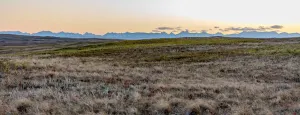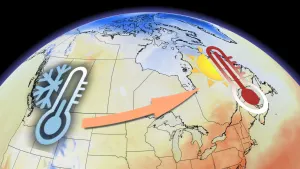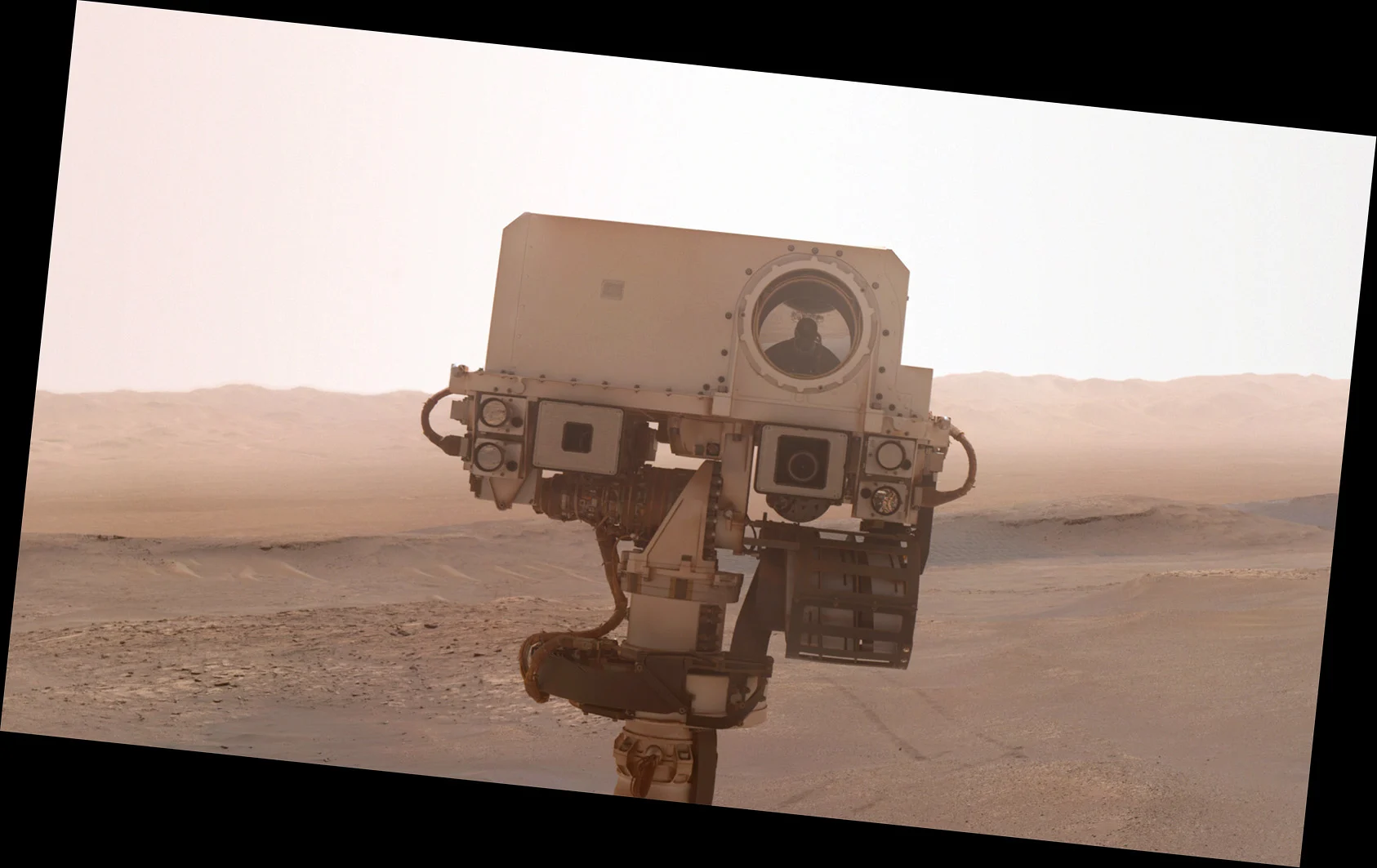
There's rare chemistry in Curiosity rover's new Mars selfie
After performing some important science, the rover paused for a photo shoot
NASA's Curiosity rover has now been exploring Mars for over seven years.
Just last month, on September 24, 2019, it performed a special type of chemistry for only the second time since its arrival, at a location in Gale Crater known as Glen Etive.
"We've been eager to find an area that would be compelling enough to do wet chemistry," Paul Mahaffy, the SAM Principal Investigator at NASA's Goddard Space Flight Center, said in a press release. "Now that we're in the clay-bearing unit, we've finally got it."
Here's the latest selfie taken by the Curiosity rover, to commemorate the occasion.
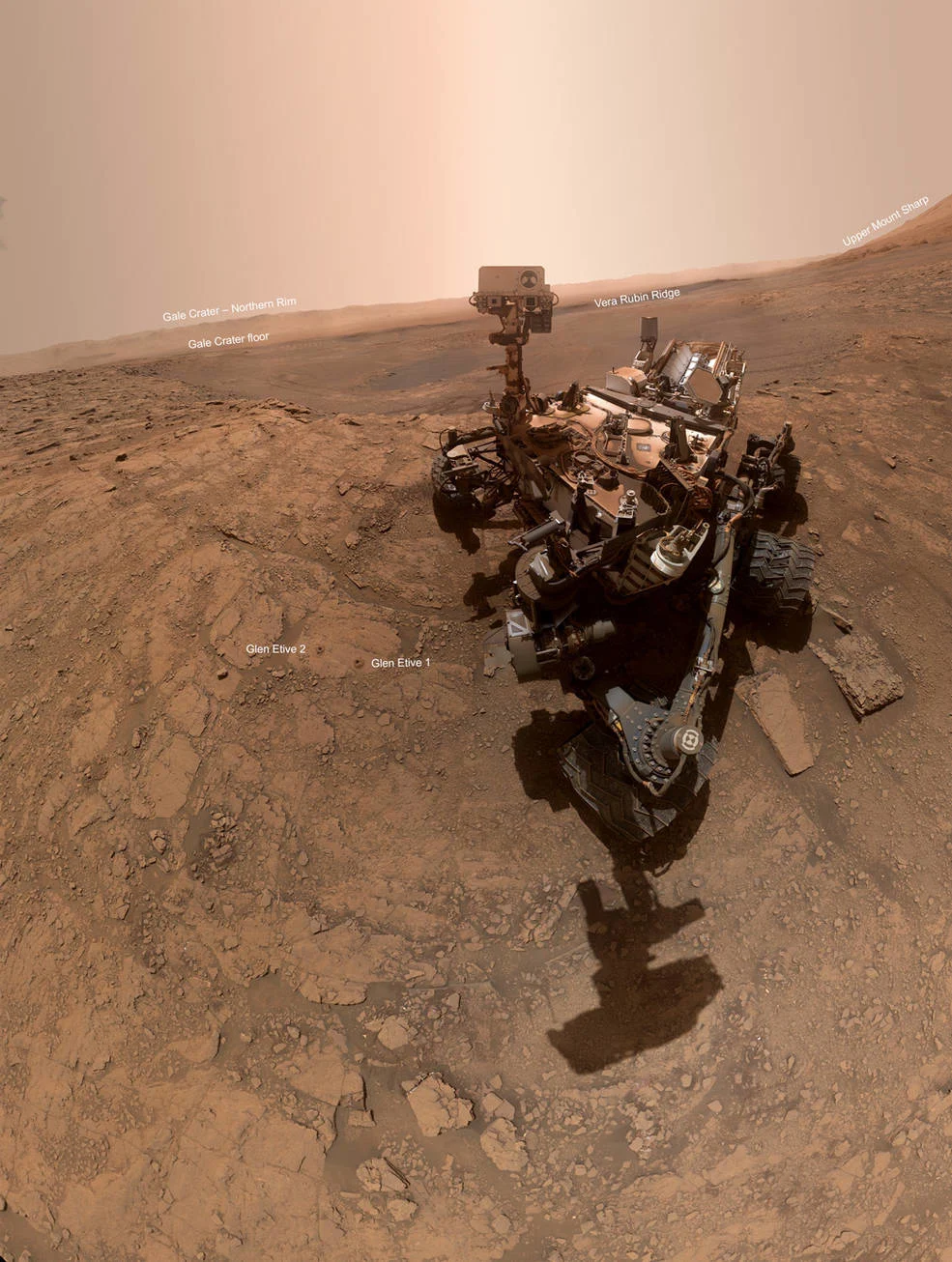
NASA's Curiosity rover took this selfie on October 11, 2019, at the location nicknamed "Glen Etive." The annotations point to the geological formations near Curiosity, and the two drill holes the rover made on September 24, 2019. Credits: NASA/JPL-Caltech/MSSS
In the distance behind the rover are Vera Rubin Ridge (named after the astronomer who essentially discovered the first supporting evidence for the theory of dark matter), as well as the floor and rim of Gale Crater, and the slope of the mountain Curiosity is climbing.
Also noted in this image are two small drill holes - each a little less than the width of a dime (1.6 cm) - named Glen Etive 1 and Glen Etive 2. This is where the rover performed some special chemistry, just last month.
Curiosity's official name is the Mars Science Laboratory, and for a good reason. We most often see the images that the rover beams back to us daily. This robot has a full suite of science instruments on the end of its arm, however, and a mobile chemistry laboratory inside its body.
This portable lab is known as Sample Analysis at Mars, or SAM, and it is used to tell what kinds of gases are trapped inside rock, sand or dust samples.

The different components of the SAM instrument on Mars Curiosity. Credit: NASA/JPL-Caltech
A sample is scooped up from the ground or a drill hole and poured into a small cup inside the SAM lab. There, the lab performs a type of science known as spectrometry. SAM heats the sample until gases trapped in the minerals boil off, and then the lab beams a laser through those gases so that it can read what they are.
SAM contains a total of 74 cups that are used for this kind of chemical analysis. Only nine of those cups are special ones, however, which contain chemicals used to perform something called 'wet chemistry'.
According to NASA, subjecting the samples to these chemicals before heating them makes it easier for the lab to detect if there are any organic compounds present. That is, those compounds with carbon-based molecules. While this doesn't necessarily point directly to the presence of life (either past or present), it does tell if the potential building blocks for life are there.
With just nine of these special wet-chemistry cups available (and no easy way to provide refills), the science team has been very reluctant to use them, except in places where they could get the most out of each use.
Glen Etive (pronounced "glen EH-tiv") is part of what is known as the 'clay-bearing unit' - a region of exposed clay, which was detected in Gale Crater by satellite, long before Curiosity touched down on Mars. It was one of the compelling reasons why Gale Crater was chosen as Curiosity's landing zone.
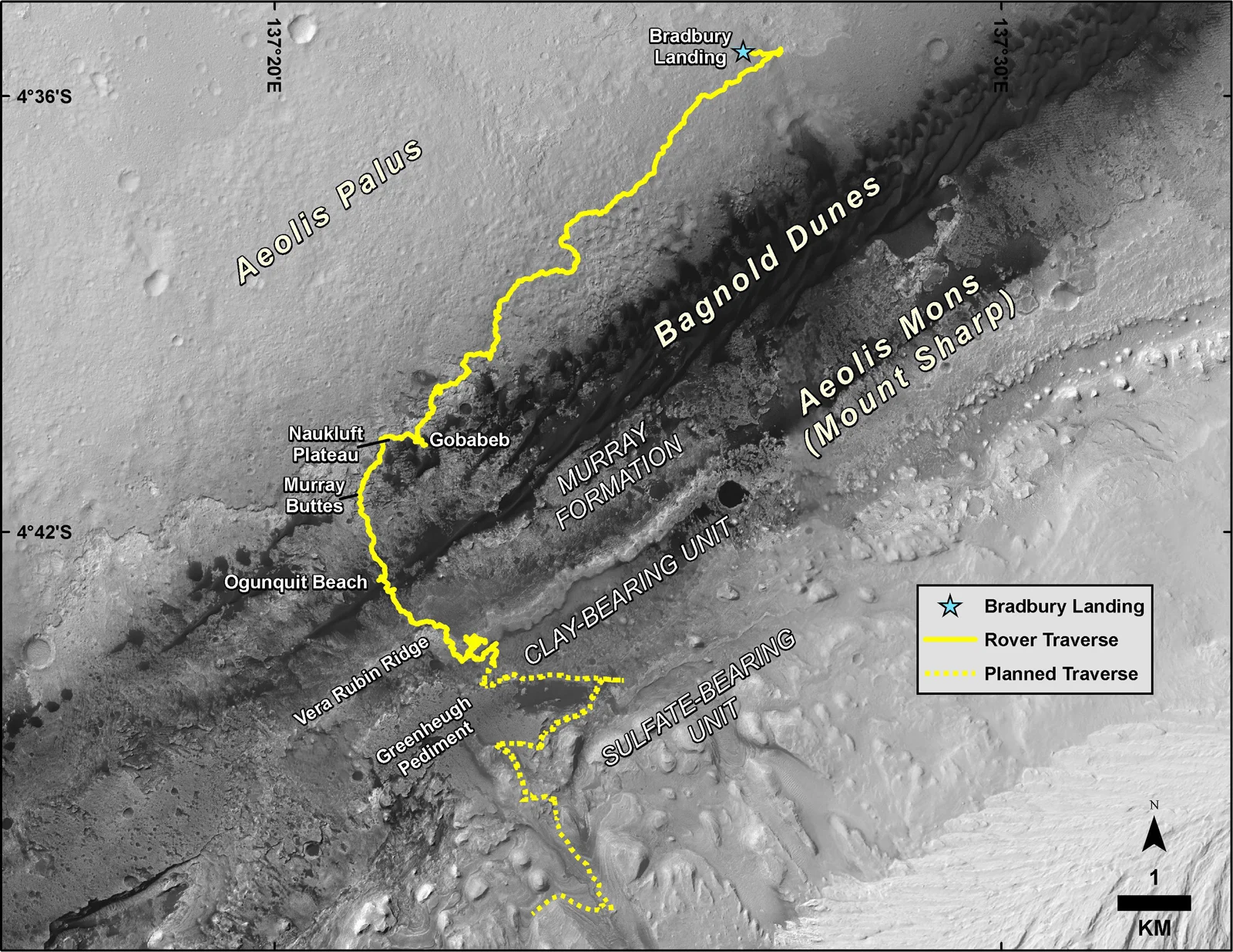
Satellite imagery of Curiosity's location on Mars in August 2019, along with the path it has taken since landing in August 2012. Noted are the locations of Vera Rubin Ridge and the Clay-bearing unit. This image was snapped by the HiRISE camera on NASA's Mars Reconnaissance Oribter. Credit: NASA/JPL-Caltech/Univ. of Arizona
Now, with the rover finally reaching this highly-anticipated science target, the team can perform some long-awaited experiments.
The only catch here, according to NASA, is that the data being sent back by SAM is highly complex, so it will take a long time to interpret the results. Expect any discoveries from these experiments to be announced sometime in 2020.
Source: NASA







